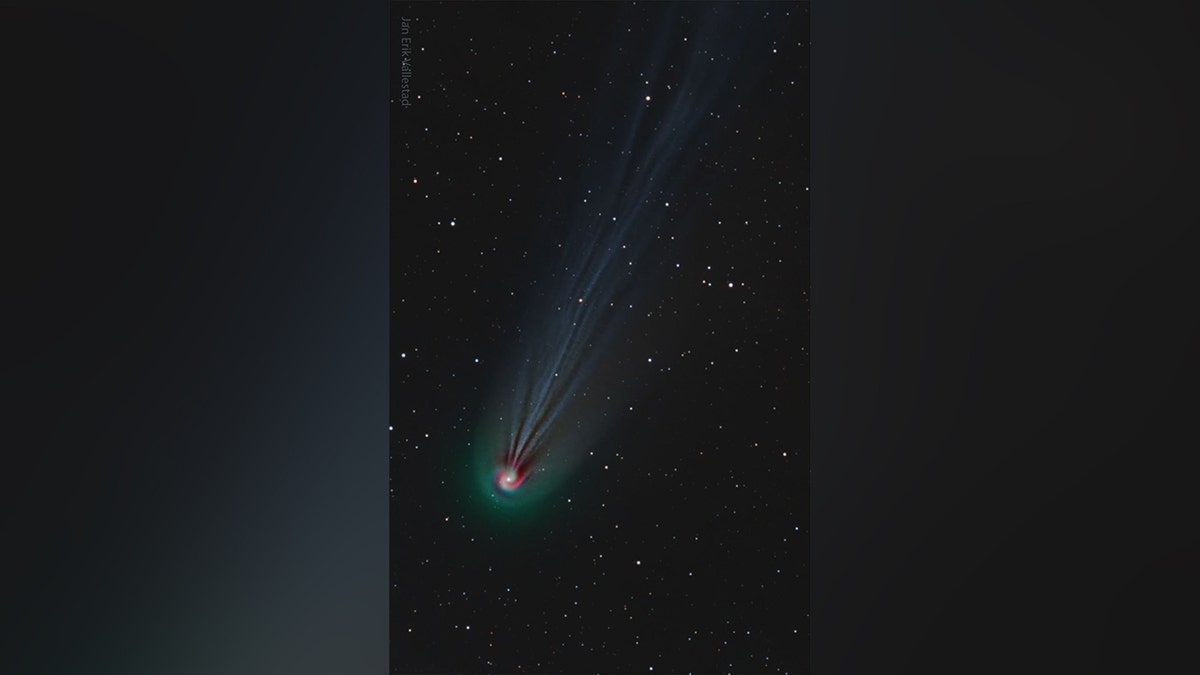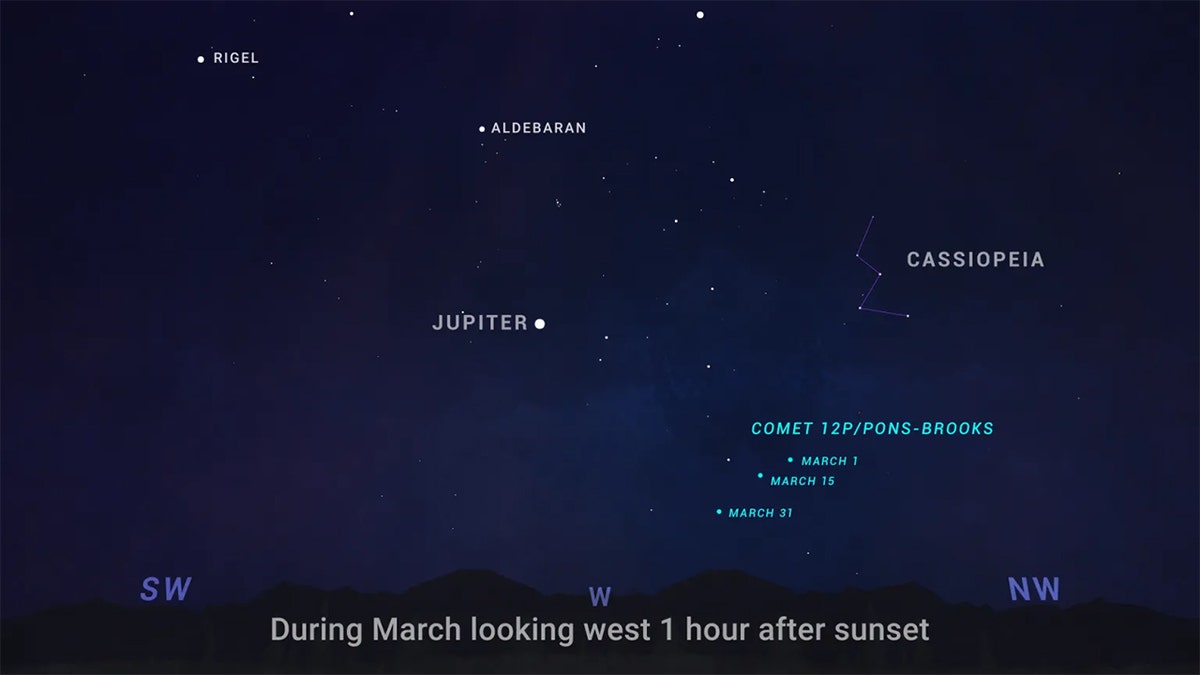NASA suggests looking toward the lower west-northwest part of the sky near the constellation Pisces, at the end of the twilight, to see the comet with a 71-year-long orbit
Sky watchers may get a once-or maybe twice-in-a-lifetime opportunity to see a comet brighten and dim, while appearing as if it has a pair of devil horns attached, as it makes its approach toward the Sun.
NASA said the Comet 12P/Pons-Brooks is racing toward its closest approach to the sun on its 71-year-long orbit. The orbit takes it as far away as the orbit of Neptune and as close as the orbit of Venus. But because the orbit is tilted, the space agency said there is no chance of a collision with Earth.
The comet is about 18 miles in diameter and has been observed numerous times over the course of hundreds of years, most notably because of its outbursts of gas.
According to Space.com, Jean-Louis Pons, who lived from 1761-1831, discovered 37 comets, mostly with the help of telescopes and lenses that he designed. On July 12, 1812, Pons saw what he described as "a shapeless object with no apparent tail," though over the next month the object brightened enough to be seen with the naked eye, though it was still dim.
3 NEW MOONS DISCOVERED ORBITING URANUS, NEPTUNE

Comet Pons-Brooks is seen in a composite of three very specific colors, showing the comets ever-changing ion tail in light blue, its outer coma in green, and highlights some red-glowing gas around the coma in a spiral. (Image Credit & Copyright: Jan Erik Vallestad via nasa.gov)
Then, in August of the same year, the comet became the brightest observed, and appeared to have a split tail.
William R. Brooks, another comet observer, lived from 1844-1921, Space.com reported. On Sept. 2, 1883, he observed the comet, though accidentally.
It was eventually realized that Pons and Brooks observed the same comet, though 71 years apart, and it was ultimately named Pons-Brooks.
DISCOVER THE UNIVERSE'S OLDEST BLACK HOLE, DEFYING THE MYSTERIES OF SPACE

Sky chart showing the changing position of Comet 12P/Pons-Brooks during the month of March. Find the comet in the west-northwest as soon as the sky is fully dark. It moves lower as the month continues. (NASA)
NASA said bursts of gas and dust get released from beneath the surface of the comet, causing the object to brighten.
As the comet nears between March and April, the outbursts of gas could cause the comet to brighten so much it can be seen with the naked eye under dark skies, particularly by the end of March.
In an image posted to NASA’s astronomy picture of the day page, Comet Pons-Brooks appears to have a light blue tail, a green outer coma, and a spiral of red glowing gas surrounding the coma.
Astronomers said the spiral could be caused by gas getting expelled by a slow-rotating nucleus of the comet.
The space agency said those hoping to get a glimpse of the comet should be able to find it low in the west-northwest part of the sky at the end of evening twilight, near the constellation Pisces.
Another unusual coincidence puts the comet about 25 degrees from the Sun during the April 8 total solar eclipse, though it is unclear how bright it will appear to sky watchers that day, when the Moon blocks the Sun.
Greg Wehner is a breaking news reporter for Fox News Digital.
Story tips and can be sent to
